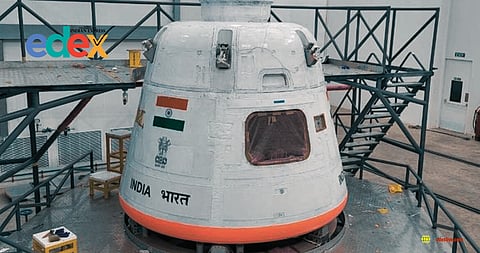

ISRO Chairman V Narayanan announced on Thursday that 90% of work on India’s first human spaceflight mission, Gaganyaan, is complete. The first uncrewed flight is slated for December, with the crewed mission now targeted for Q1 2027. “Safety of astronauts in space is crucial, and thus each test is being extensively conducted… a lot of technology development has to take place – the rocket has to be human-rated, the orbital module has to be developed, and the environmental control safety system has to be developed. Then coming to the crew escape system, parachute system and then, of course, there are the human-centric products,” he said.
Uncrewed tests and Vyommitra debut
“Three uncrewed missions have to be accomplished before going for the crewed mission and we are working towards it. In the first uncrewed mission, Vyommitra (the humanoid) is going to fly and we are working towards that to accomplish the crewed mission by the beginning of 2027,” Narayanan added. A successful parachute drop test was conducted on 24 August at Sriharikota, simulating splashdown with nine parachutes deployed from 3 km altitude.
Next-gen launchers and lunar ambitions
Work on next-generation heavy-lift launchers (75,000–80,000 kg) for crewed lunar missions is in the design phase. The first module of the 52-tonne Bharatiya Antariksh Station (BAS) is set for 2028. Chandrayaan-4 (sample return) and Chandrayaan-5 (Lupex with JAXA) are approved. Venus orbiter and Mars lander missions are in configuration.
NavIC, commercial launches, and infrastructure
NavIC will be completed with three more satellites; the first launches of this financial year. The 6.5-tonne US satellite BlueBird-6 is scheduled for December 2025. ISRO is building a third launchpad at Sriharikota and a complex at Kulasekarapattinam. CMS-03 launches on LVM3-M5 on 2 November, said VSSC Director A Rajarajan.
